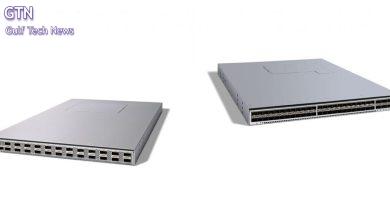How innovations in satellite technology can transform border monitoringBy Jamil Kawar, VP for Missions in the Middle East and North Africa for ICEYE

Protecting national borders is one of the most fundamental duties of a state. The pace of technological advance makes the task ever more complicated. Drones and unmanned aerial vehicles (UAVs) can evade traditional ground-based monitoring and carry payloads over fences and natural barriers. Meanwhile, innovations in drilling and tunnelling equipment have enabled the construction of sophisticated tunnels under border barriers, providing a boon for smugglers and terrorists alike.
All the while, growing geopolitical instability has increased the risk of bad actors leveraging these and other technological innovations to cross national boundaries and harm states’ strategic interests. Current events in the Red Sea underline the importance of being able to monitor and safeguard maritime security and borders.
Monitoring borders from space
However, new technologies are arriving to help bolster defences. The emergence of affordable, next-generation satellite technology, which can monitor changes on the Earth’s surface from space, is one such innovation.
From a defensive perspective, previous generations of satellite technology have only been of limited use. Legacy satellites often suffer from poor spatial and temporal resolution, meaning they cannot provide detailed images of small or fast-changing events and may only pass over specific locations infrequently, leaving open huge gaps in visibility.
They often also lack rapid data transmission capabilities, leading to delays in the availability of imagery for analysis and decision-making. Imaging results are also often poor in cloudy and smokey conditions, or during night.
The latest generation of satellites have solved these issues. Synthetic aperture radar (SAR) satellites bounce powerful radar beams off the surface of the earth from around 550 kilometres in space. The beams return to the satellites, recording and building an accurate picture from these pulses of what’s happening on the ground below.
The technology can take images through obstructions including clouds and smoke and even take images of the ground at night. This provides governments and their relevant border-protection agencies with persistent coverage of fast-breaking events on the ground in all weather conditions.
What’s more, these images can be ready for use in a matter of hours, accelerating decision making and enabling organisations to respond to potential threats much faster.
SAR satellites also enable much higher-quality and more flexible imaging. Users can get a single image of an area of up to 50,000 km2 or zoom in to areas down to less than a metre. Indeed, daily repeat imaging enables organisations to see centimetre-level ground changes not visible to the human eye, such as changes caused by vehicle traffic or other activity on a gravel road, grass, or in a desert.
Applications for SAR satellites in border monitoring
There are diverse applications for SAR-based earth observation in border monitoring. For one, the technology can help nation states stay on top of evolving risks and threats to national security at borders and other strategically important sites. Detailed and frequent SAR satellite images help organisations rapidly identify and analyse unusual or unexpected activities taking place anywhere on Earth, including changes in aircraft, helicopter, vehicle activity, and unusual concentrations of equipment.
When it comes to maritime borders, the technology can help nation states detect and counteract security threats including smuggling, illegal immigration, and unregistered “dark” vessels entering their territory and Exclusive Economic Zone (EEZ). Using SAR-based earth observation, governments and their agencies can rapidly locate and track ships, identify their destinations based on their manoeuvring patterns, and take immediate action if required.
Similarly, SAR observation data can help governments and agencies react to threats in strategically important ports. SAR imaging provides actionable intelligence on port operations, anywhere in the world, enabling organisations to track changes and patterns to prevent possible national security issues.
In all these cases, the importance of SAR satellites is in providing a persistent, near-real-time stream of data both day and night and during any weather conditions. Armed with this intelligence, states and their agencies can detect and react to activities on land and sea quickly and effectively, and even predict future events to ensure national security.
Keeping pace with bad actors
Regardless of whether dealing with criminals, terrorists, or competing countries, governments and their agencies are having to protect borders in a world characterised by determined bad actors that are armed with increasingly sophisticated technologies.
To keep pace, governments need to adopt similarly sophisticated approaches to protecting the integrity of their borders and keeping citizens and critical national infrastructure safe. Recent developments in satellite technology mean that earth observation data will play a vital important role in helping governments ensure national security and protect their interests at home and abroad.





